As our boat pulled into Manzanillo on the Pacific coast I was just thrilled to be back in the tropics. Such a contrast to the autumn and winter of Asia both weather wise and culturally. We were back to the sunshine, palm trees dotting the skyline, people ambling around in skimpy vests and suntanned complexions... no one was going to be pinching my brown arms in horror here. Woo hoo! Also notable was the high percentage of men sporting moustaches c.1970 and a marked increase in body mass which shocked us to the point of gawping*. Not cool I know but coming from asia where for months we've been surrounded by people of slight stature (I was in the XL category) to see Mexicans is a real sight to behold... they are L>A>R>G>E.
*I also think I caught a bad case of the 'gawp' in India and haven't quite managed to shake it yet.
Leaving Manzanillo port took us a while longer than anticipated as the customs guys held our bikes and gear hostage for a day under the pretence of 'It's Sunday, there's no one to search them', despite the fact that they managed to search 2 of the ships departing crew members bags who were with us. Customs then proceeded to charge us handsomely for their release (storage and taxi costs). I'm not sure wether I felt more aggrieved to discover that they didn't rummage through all our gear, if you're going to charge us for a search at least have the courtesy to do the damned search. As it was the delay didn't matter as it was my birthday and we decided to stay put rather than riding into the hills and spent the day on a boat trip round the holiday area of the bay, snorkelling and drinking tequilla.
Beyond being thrilled by the warmth, palm trees and tequila (I've actually developed a taste for it, would even go as far as to say I enjoy it), I was also smiling at the sight of the odd pelican bobbing in the bay. Pelican translates to pelicano in Spanish. Childishly, I am pleased no end by the words which are the same as ours but with an -o added on the end. Talco for example (excellent for prickly heat and rhino bum prevention) being a particular favourite. But back to the pelicans. Over time I just fell in love with them. They are such languid, graceful fliers for what looks like should be a clumsy bird, skimming and fishing the seashore in elegant line formation. They're rather soft and cuddly looking too, just lovely they are, lovely, and as we spent our last month in Mexico migrating north with them, we cycle at the speed of a migrating pelican - though they take less breaks, I just grew to love them more. I felt we bonded. (Though by now they're probably all washing up on the Louisiana coastline caked in oil, bloody BP).
But on to the ride. Mexico turned out to be an excellent country for cycling. Ultimately this is because Mexico is blessed with pretty coastlines, awe inspiring desert scape's, forests, wildlife, ancient blood thirsty Aztec civilisations (an oxymoron surely), great beer, chili's at every meal and tequila. We also happily rode around on highways and deserted byways without being robbed (customs excluded), shot or kidnapped by drugs cartels. What more could you ask for? Admittedly you've got to have a fearless attitude toward 'taking the lane', the legs for ascending mountains and an ability to block out the odd cry of 'Gringo!' but on the whole it was very good indeed. In fact the people of Mexico treated us with at times unrivalled kindness. Even the drivers didn't try to run us over much.
Whilst in Mexico the one attraction I really wanted to see was the Monarch butterfly reserve. Every year millions of monarch butterflies migrate south to overwinter in the forests of Michoacan and around Mexico City where they hang around in the fir trees, wait for it to heat up, have a huge mating frenzy, apparently a bit of a spectacle, and then they migrate back north to Canada again. It takes about 4 generations for the population to the complete trip in one direction, scientists are baffled as to how they manage it, how do they know where to go?! With this goal in mind we left Manzanillo and headed in land with the aim of making it to the old colonial city of Morelia which is just a day or so's ride from the Monarch butterfly reserve.
Lovely. All good in theory. But what I wasn't prepared for were the hills along the way. Armed with the best map we could find, which lacked relief (in more ways than one), we selected possibly the hilliest route we could across Mexico. There are two very good reasons that most people cycle north to south in Mexico, the Sierra Madre Oriental and the Sierra Madre Occidental, beasts of mountain ranges running down the middle. Having been effectively off the bikes for over a month, subsisting on a diet of cheese and bread on the cargo boat, moving onto a diet of queso and tortilla's (cheese and bread) in Mexico and being an off the wagon vegan straight out of asia (where cheese is not a highly featured ingredient) it would be fair to say that I probably wasn't functioning at my best. That, the heat and the crippling hills made my first few days riding in Mexico a bit of a struggle. Don't get me wrong the canyons we rode up and down were stunningly beautiful but it is arguable how much you can enjoy the view whilst feeling like you want to puke up your latest quesadilla at the side of the road from heat and heart strain. The Mexican's also seem to plan roads in a 3 step process:
STEP 1. locate where the road should go to link up towns
STEP 2. find the highest hill (preferably a series of hills) in the vicinity
STEP 3. reroute the road to take in all potential views from the top whilst checking out wildlife in low lying areas
If I had a pound for every time James ranted 'For god's sake why couldn't they just build it up the valley, it's so stupid!' I could probably fund another year of bike travel.
However the views were stunning. Mexico is truly a spectacularly beautiful country (the ranches less so but if you like cows and can blank out the loss of rainforest that came with them even they can be pretty too). Much of Mexico is volcanic, the beaches are volcanic, the soil is volcanic, and the volcanoes are well and truly smokin'. Riding to Morelia we were accompanied by views of the volcanoes around Colima which accompanied us for days. I felt dwarfed by the landscape which we seemed to inch our way along but it was also widely varied. Mexico is home to beaches, desert, rainforest, scrub, mountains, lakes, sprawling cities and tiny villages, its all there and at times you can ride through 3 vastly different habitats in a day. Most exceptionally we managed to set off one morning from volcanic/tropical Mexico, up, up, up, through beautiful temperate pine forest in dappled shade. We paused for lunch at a great little shop where I've ever regretted not buying a bottle of the owners brilliant scarlet home brewed liquor, and afterwards continued upwards through the by now pleasant temperatures caused by altitude and shady pine to crest the mountain, turn the corner and find ourselves in real cowboy country. All around a landscape of dust and scrub, vultures and cacti and multitudes of squashed skunks on the road. They don't smell any better dead. We had made it to the Sierra Madre plains proper and the transition was almost instantaneous.
Along the way to Morelia we paused in old towns for the night or sometimes just for palletas (whilst my favourite ice lolly turned out to be tamarind, my least favourite was tamarind and chili, there is absolutely nothing refreshing about a chili ice lolly no matter what the friendly man might say). The towns themselves were almost without fail pleasant places to stop with lovely shady benches in pretty public squares at their hearts, often with old bandstands in the centre, all left over from colonial times but still the heart of the community, even newer towns where built to this model. In bigger towns and cities these little squares would come to life on evenings and weekends with bands playing (you can't beat a good brass band) and clowns entertaining young and old alike, though how these squares could support so many balloon sellers I'll never know. The only downside of rolling into town is that most of the roads where cobbled (or just wrecked). At home we have 'twenty's plenty' signs and speed bumps, in Mexico they have cobbles... it does explain why you don't see too many people riding bikes in Mexican towns though, a donkey is much more practical (though mostly what you see is beat up pick up trucks and ancient VW beetles).
Arriving in Morelia I had a real buzz of excitement. Morelia is a stunningly beautiful and vibrant city. It's teeming with beautiful old spanish buildings, Mexican murals, street cafes, and a sizable sweet market (there are other markets too but the sweet market made me smile, it probably didn't do much for my smile, as I will explain later, but it did make me smile). We also happened to time our visit with a special celebration involving fireworks over the catherdral. Many of the cities catholic churches were so ornate they looked as if they had been iced rather than built, we even had the surreal experience of visiting one particularly over the top pink and gold confection during mass to then have it descend into some kind of mariachi party. The plaza was filled nightly with street entertainers and balloon sellers. And we went for cocktails in possibly the most beautiful bar I have ever been in. Balcony of Angels was situtated on the top floor of a huge old building open to the night sky and views of the cathedral roof, with cocktails we could actually afford to drink and lovely company. All in all it was so perfect we stayed an extra day.
Riding a bike long term can really cut you off from the world beyond your field of vision. We rarely hear news or speak to other travellers (we just don't end up in the same places). Its probably for the best in many respects as we have a tendancy to ride right through trouble blissfully unaware with no ill effects. In Morelia we had a bit of a 'will we, wont we make it' situation due to reports from fellow travellers that the road we needed to take (and the entire village of Angangueo we planned to ride through) had been wiped out in a devastating flood. There were also rumous that it had potentially devastated the butterfly population. We had heard nothing about it beyond a snowbird commenting on how it had been unseasonably rainy. Whilst we had experienced some of this, being trapped in the tent in an unglamorous field for 36 hours by torrential rain, being saved from hunger by a kilo of strawberries I bought from a roadside vendor (which at the time J had been laughing about how we'd never be able to eat them), we'd had no idea there were landslides and evacuations afoot. However the tourist office reckoned that whilst there had been damage the road was passable. So we headed off hoping for both roads and butterflies.
As it was, when we reached Angangueo we could see why there was a problem. The entire town is built in the narrow gorge forged by a swift flowing river. Over time people had built further and further up the banks and towards the source, removing stabilising vegetation and building in ever more precarious places. As rivers naturally erode, its what they do best, it was just a terrible accident waiting to happen. As we started to ride up we had no idea (not for the first time) just how steep and high the road was going to go. Near the town centre (a third of the way up the mountain) we decided to call it a day. The village was such a mess with streets washed away leaving huge holes and trenches where the road should have been, walls and pavements where caked in white lime (to prevent disease) and most homes without water and power. We found a discounted room in a flood damaged hotel and an intrepid cafe owner who had supplies to make us supper. It was scary to think how the people of the village would manage as this was the peak season when everyone would normally make a living from the butterfly tourists but without them how they would ever recover I couldn't imagine. The next day we continued on and up only to discover the higher we went the worse the damage was, houses where completely demolished, trucks battered and overturned in the river, with the army shuttling recovery teams around. We wheeled our bikes through the disaster area for a couple of hours before continuing to push up the otherwise deserted road. It was a shocking sight.
After many highs and lows (mostly altitude induced) we finally made it to the Monarch Butterfly Reserve and we really couldn't have timed it more perfectly. The weather had just started to heat up which meant that the butterflies were getting frisky and warming up for moving out. Nothing could have prepared me for the sheer mass of butterflies in the forest. The branches of the trees where coated orange and bent with their collective weight... imagine how much a butterfly weighs and then how many it would take to make a branch bend, then imagine that on all the branches on the tops of all the trees... truly awesome (in the old fashioned sense of the word) and as if that wasn't enough the air was filled with clouds of flitting and mating butterflies (and the ground carpeted in spent males, the females do the migrating bit laying eggs along the way). To see it was to make the whole journey worthwhile, an epic sight.
From Morelia we made our way to Mexico city where we were hosted by the lovely Kodiak and Caty. Mexico City is ringed by mountains on all sides with the poorer homes knocked up on the hillsides and the older heart of the city at the centre. Whilst there we visited the Museum of Anthropology which nearly made my head burst, took a trip round the Xochimilco Floating Gardens and the stunning Frida Kahlo Museum. Located in the blue house where Frida grew up and lived with Diego Riviera, the museum showcased not only her work, but photographs and letters relating to her life and times to create a powerful insight into her artwork and the world she lived in, both tragic and inspiring.
We also made the trip out to the ancient city of Teotihuacan. Its not really known who founded it as it has traces of the Zapotec, Mixtec and Maya cultures but eventually the Aztecs took it over for mostly ceremonial purposes. Whilst the plaster which would have originally covered the walls and pyramids are long gone the well built stone and mortar city was mind blowing to behold, as were the numbers of tenacious vendors in the midday sun!
Whilst in Mexico city I managed to meet up with my old Stokie flat mate who was teaching out there for a drink which was a very nice surprise indeed. We aslo went to a pulque bar. Where cantinas can be slightly seedy mexican men only bars the pulque bar was like a student piss up. Pulque has been around since pre hispanic times, was drunk by the Aztecs who limited its consumption as it made people act a bit crazy, from a people who commited human sacrifice on a massive scale to keep the sun rising daily, I had to wonder - just how crazy can it make you?! We thought we'd give it a try. As it turned out I rather liked it (surprise, surprise) it tasted very much like the magoli of South Korea but james wasn't so keen, he said it reminded him of a brew he used to drink when he was living in the jungles of Peru that was fermented with the spit of toothless old ladies... it seemed to affect his enjoyment, god knows why, he can be so bloody fussy some times.
The day we were due to leave Mexico City we got up, ate breakfast and I cracked a tooth. Ismael and Caty had arranged for a group of friends to ride out the city with us, as it was Caty had to take me to the dentist, interpret for me, arrange a discount and wait with me while I actually had my wisdom tooth extracted. They both then insisted we stay an extra couple of days. I will be eternally grateful for their kindness and patience. www.warmshowers.org... sometimes there for the nasty things in life.
In the end, despite the tooth finale, we just loved it.
At around this time we were due to head to Oaxaca, but James hit the travel wall. Both homesick and hillsick he no longer wanted to keep heading south but to turn east and north and start back home so we headed east to Veracruz and the coast. On the way we passed through some remarkable cloud forest where indigenous populations hang on to traditional ways of life. We were aslo interviewed by a real character for a documentary he was doing about a village we randomly ended up in where apparently the Beatles had gone to take magic mushrooms and so triggered an unstoppable influx of hippies on a long trip. You'd never have guessed to look at it today... though come to think of it, there was that little hut with a mushroom painted on the side. Anyway, it was a great story (all true) and we had a laugh.
Originally we were headed to a patch of rainforest which turned out to be so tiny we didn't bother going after all but headed straight down to Veracruz, which turned out not to be that great for a holiday, so we headed north to Papa Tortuga's place (Papa Turtle) with the aim of helping some of the rare Kemp's Ridley turtles in their nesting activities (or rather saving the eggs by relocating them up beach so they didn't get eaten by dogs or people). Papa Tortuga was a super sweet man who posted us 6 miles up the beach to watch for turtles and help save eggs. As it turned out this was a great place for a holiday, especially as no turtles came ashore when I was there so the most I did was tidy around the hurricane damaged house we were camping inside, pick litter off the beach (please, please, when will we ban plastic bloody bottles?) and drink coconuts, eat coconuts and make coconut and tequila cocktails. Despite the disappointment of not seeing a turtle (James randomly had one lay an egg in his hand when he went back down to the really busy part of the beach to buy supplies, no wonder they're endangered) it was a great spot of deserted beach, to get there we had to wade through the sea with our bikes over heads and ride down the sand for 6 miles so it was wonderfully tranquil (until the day the family next door decided to kill a pig that is, if you'd heard it you'd never eat pigs again). In the end though it was time to move on, so having helped save exactly zero turtle eggs we left a donation and headed up the Gulf Coast to the U.S. border with the wind in our face (it was as tough as riding up a mountain without the views) but with the migrating pelicans, raptors and occasional monarch butterfly by our side.
The closer we came to the border the stranger Mexico became, interesting landscapes were replaced with ranches, population was sparse and the towns became more spaced out (distance I mean) and shadier to be in. We felt ourself in the presence of the U.S. border long before we got there (Mexico's border zone seems to be about as wide as the length of Britain). But we knew we were in the zone when the sights of armoured tanks and military convoys were commonplace. Its a curious feeling to have a man with a massive machine gun in one hand waving at you from the back of a tank, you feel kind of obliged to smile back. In towns we'd often see teams of Mexican troops, armed to the teeth in pairs sneaking through alleys as though they were on a raid. We never saw one thankfully but it was disconcerting none the less, but like most social problems you're unlikely to come to harm except by accident in crossfire or by venturing out after dark. As it was we just rode and rode, trying to get the miles over with and beyond being tucked up after dark it was all fine.
Reaching the border I had real mixed feelings. All the way up the Gulf Coast I had been developing a real sense of going home. We were out of the tropics and about to head into a land where we could, for the first time since leaving home, communicate with ease. I was sad to leave Mexico and its beauty. I was also sad to leave behind me all the exoticness of our travels so far (the warmth, the landscapes, the languages, the food, the wildlife, the people). In so many ways I was all up for staying in the tropics and on the road forever, but then again, I miss my family and having friends who know you and love you is a thing of value beyond measure, I was also becoming blasse to experiences which would have blown my mind when we set off, so it was probably time to come home. And so with an equal mix sadness and excitement we crossed our final border to the U.S.
Sunday, 14 March 2010
Subscribe to:
Post Comments (Atom)
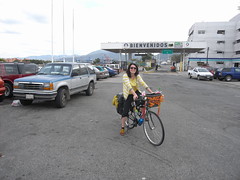



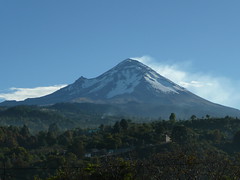





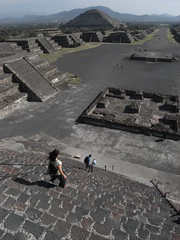
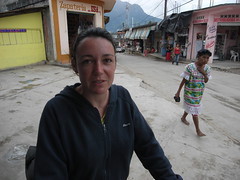
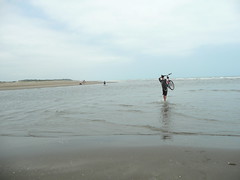
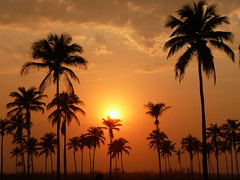

No comments:
Post a Comment